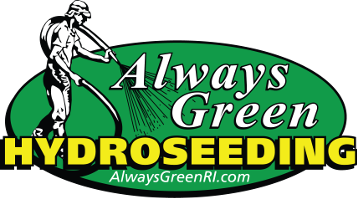About Always Green
Explore Our Site
©2024 Always Green Incorporated, all rights reserved.
Evaluating a Fertilizer Program
One of the most confusing aspects of owning a home is deciding on a fertilizer program. Should you have it done or do it yourself? Lots of people sell fertilizer programs, which one is the best? Many people offer advice, but what does the lawn really need?
Fertilizer 101: The Science Overview
First, you must learn what the numbers on a fertilizer bag stand for. The first number represents the element Nitrogen (N), second is Phosphorus (P) and the last is Potassium (K). All fertilizers are stated in this order: N, P and K. Each number tells you how much of each element is present as a percent by weight. For example, if you see this fertilizer, 10-5-14, then you know it is 10% nitrogen, 5% phosphorus and 14% potassium. One hundred pounds of this fertilizer contains 10 pounds of actual nitrogen, 5 pounds of actual phosphorus and 14 pounds of potassium. Being able to calculate how much actual N, P and K is in any given fertilizer is important. The rest of the fertilizer is inert ingredients.
Next, you need to know some basic information. Rates in applying fertilizer are expressed in pounds of fertilizer applied per 1000 square feet. Actual amounts of each element are expressed the same way. For example, if you applied 10 pounds of 10-5-14 per 1000 square feet, you have applied 1 lb. of actual N, .5 lbs. of actual P, and 1.4 lbs. of actual K. Professionals always talk about a program in actual pounds applied. So if someone says they have applied 1 lb. of K, they mean they have applied 1 lb. per 1000 square feet of actual potassium.
Ok, so what does grass actually need in a year? The big rule of thumb, accepted by everyone, is to start out with about 4 # (# is short for pounds) of N, 1# of P and 2# of K per year. This 4-1-2 recommendation has been around for long time, but an "adjusted" rule for our area might be 4.1-1-2.8 or so. All programs will need some adjustment due to soil type, desired appearance, and the fact that Mother Nature has the final word. Adjustments are usually changes in amounts, timing and kinds of fertilizer applied. Let’s evaluate a sample program:
This is close to the 4-1-2, being under for N and over for P and K.
Need to calculate your lawn area? Go to Area Calculator
Rules of Fertilization
1. Don’t apply more than 1 lb. of N at a time, and if you do put 1# on, wait at least 4
weeks before applying any more. Think very carefully before you consider putting
on more than 4.5# of N per year, because while over fertilized lawns are greener, they
are more prone to problems such as excessive thatch and lawn disease.
2. September 1st is the most important application of the year, and November 1 is the
second. Don't miss these.
3. All fertilizer programs are maintenance programs. This means that P and K are
present in the soil at medium or high levels. The only way to determine what the soil's
P and K level is to take a soil test and send it to a soil lab for analysis. A lab soil test
will measure P and K levels and then a plan can be made to correct any P and K
deficiencies. The lab will also test the soil pH. Soils in the Northeast usually have low
pH, so lime should be applied annually. Soil tests do not check nitrogen levels because
N is not stored in the soil and must always be a part of an application plan. If you have
very high expectations for your lawn, I suggest you have a soil test performed every
three years or so.
4. You will likely need to make adjustments in any program to fit your desires. To have
the kind of grass you want, you may need to shorten the intervals between
fertilizations, and go to 5 applications. Your soil type has a big influence. Sandy
or added topsoil have less nutrient-holding capacity than a clay soil or one with three
or more inches of topsoil.
5. Potassium plays a vital role in a grass plant's appearance, and many soils, particularly
sandy types, have low potassium levels. Grass growing on soils with adequate
disease potassium levels are deeper rooted, has more drought, heat and cold program
hardiness, better and insect resistance, and better color. If a person uses the very
popular and described above, collects his clippings and is on sandy soil, he can expect
a K deficiency predict the lawn will look poor.
6. Over applications of fertilizer will also cause problems.
7. There are many different fertilizers. If you are low in K, 0-0-60 is a good one. If the of
fertilizer program you like does not apply enough K, you can make an additional with
application 0-0-60. Don't apply more than 1.2# actual at one time, and don't mix
potassium another fertilizer; make separate applications.
TIPS & RESOURCES
Contact Us
Always Green, Inc. is a locally owned and operated hydro seeding company servicing all of Rhode Island. Since 2004 we have been providing hydro- seeding and erosion control services for residential and commercial properties. We specialize in planting quality home lawns for a fraction of the cost of sod.
In addition to our hydro seed and erosion control products, we continue to add additional services for all your landscape and lawn care needs. Explore our site to learn more about our products and services.


